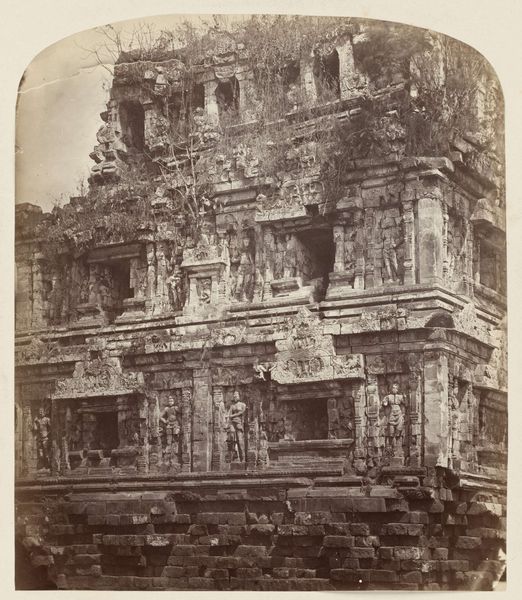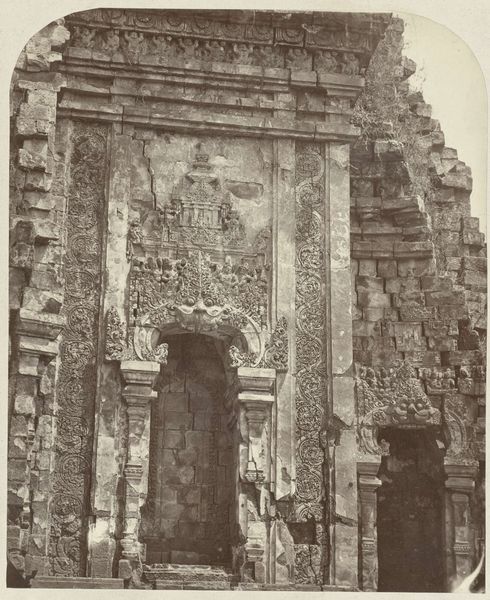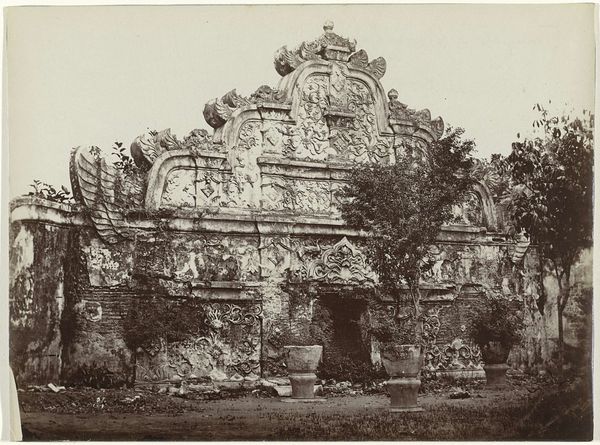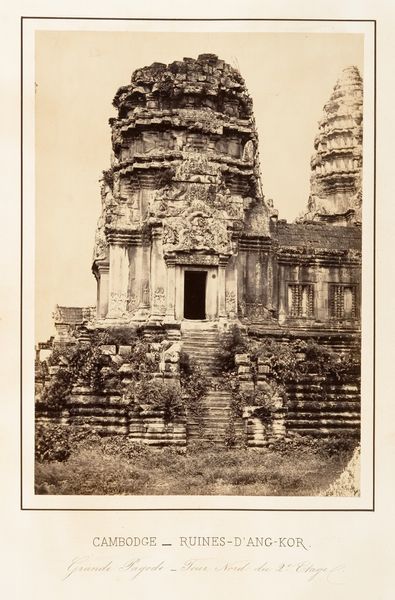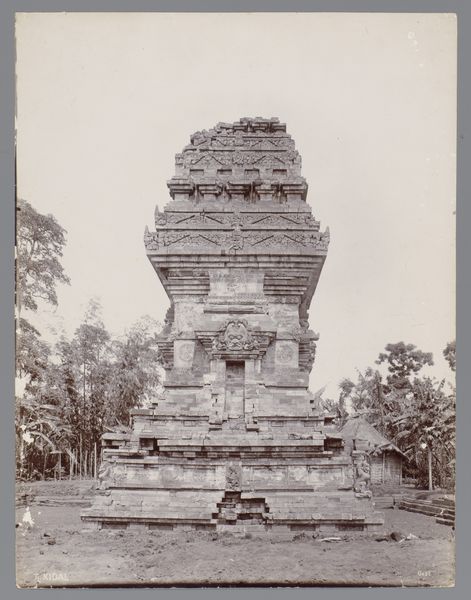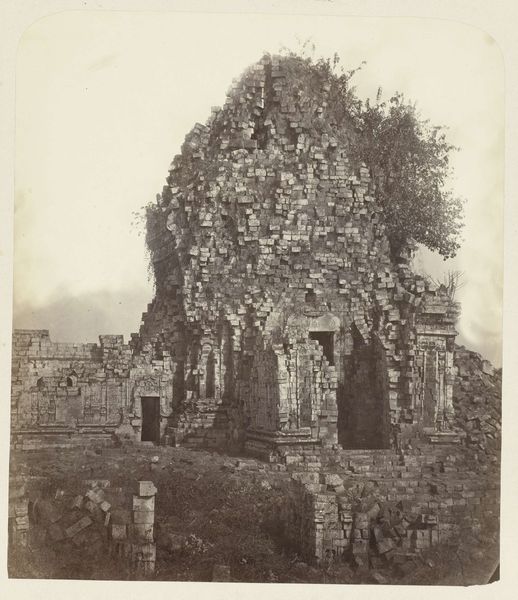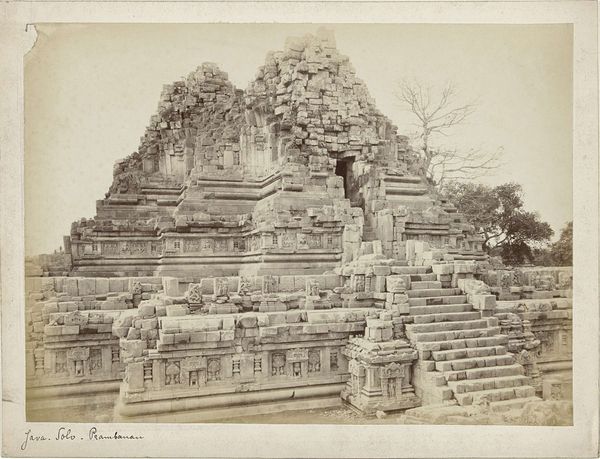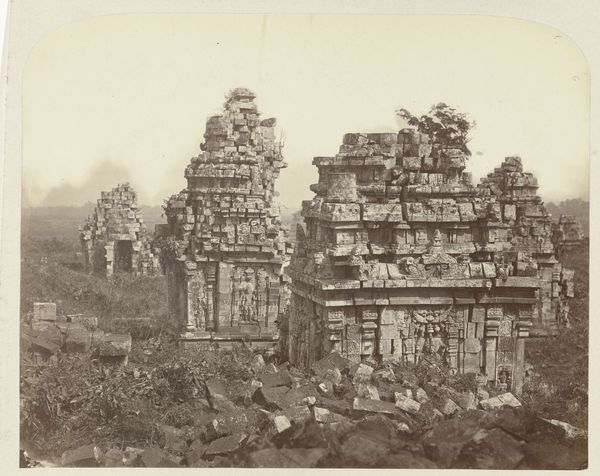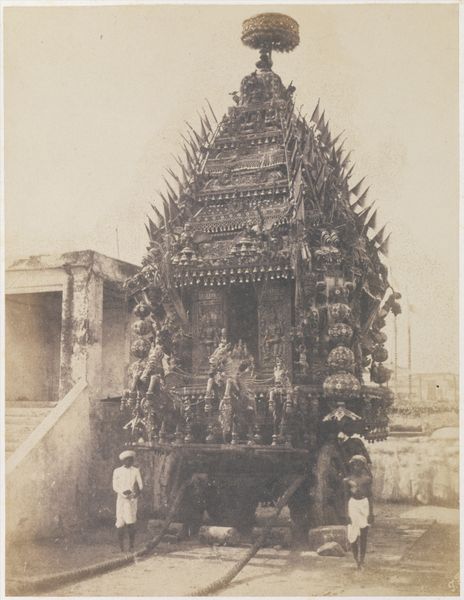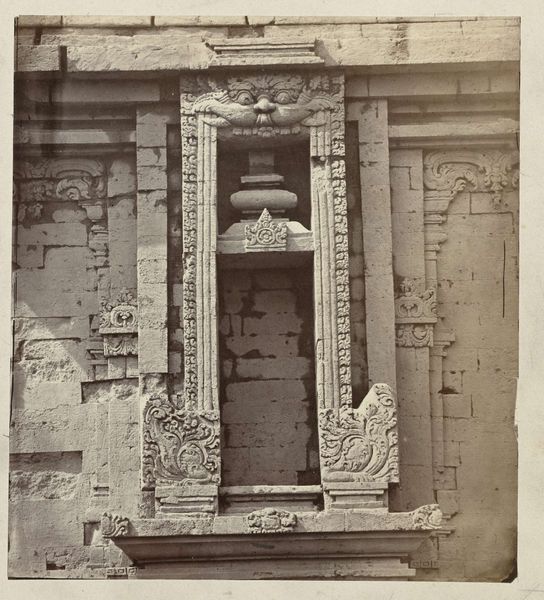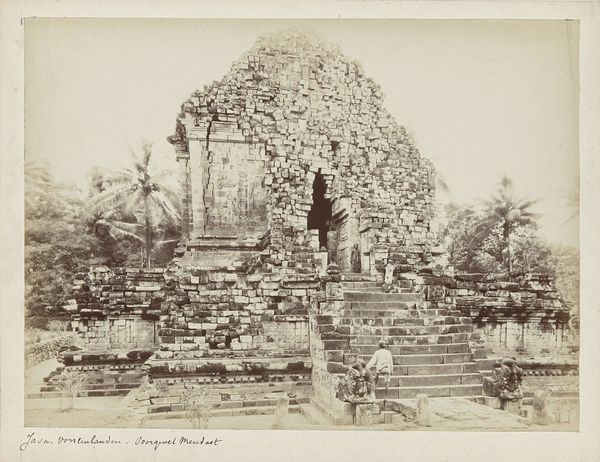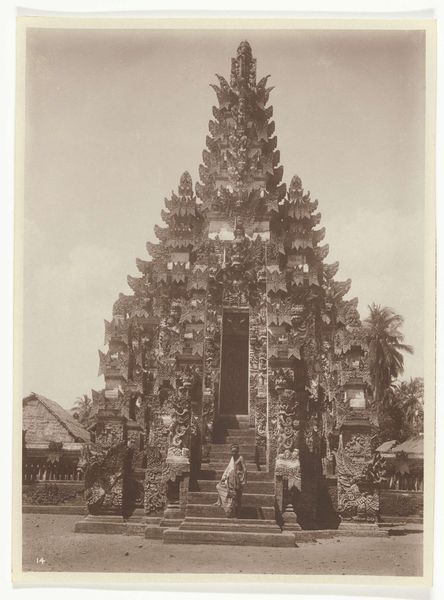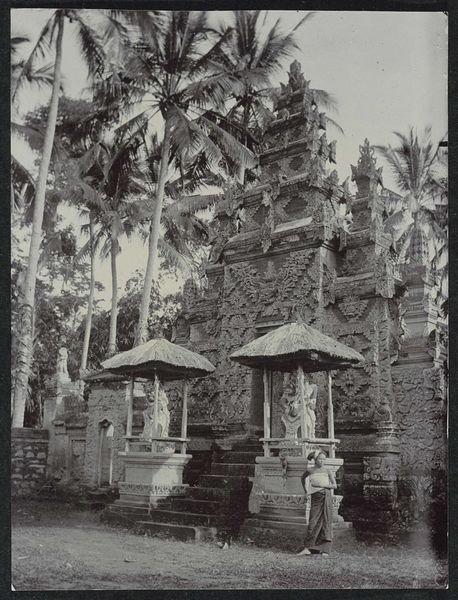
Candi Kalasan (Buddhist), general view from the northeast. Kalasan, Yogyakarta district, D.I. Yogyakarta province, 8th -9th century. Possibly 1865 - 1867
0:00
0:00
tempera, photography, site-specific
#
tempera
#
asian-art
#
landscape
#
photography
#
ancient-mediterranean
#
site-specific
Dimensions: height 340 mm, width 290 mm
Copyright: Rijks Museum: Open Domain
This photograph, captured by Isidore Kinsbergen in the late 19th century, shows the Candi Kalasan temple, built between the 8th and 9th centuries. The temple emerges from the earth like a primordial mountain, its stone carvings and tiered structure evoking Mount Meru, the sacred mountain in Buddhist cosmology. Notice how the temple’s upward striving form mirrors the spiritual journey towards enlightenment. This architectural symbol has its echoes in the ziggurats of ancient Mesopotamia and the pyramids of Egypt. In each case, the structure serves as an axis mundi, a cosmic centre linking the earthly and divine realms. The temple’s current state of decay can be interpreted as a memento mori, a reminder of the impermanence of all things, including grand monuments. Yet, even in ruin, the temple continues to inspire awe, engaging our collective memory. The temple stands as a testament to the cyclical nature of history and belief.
Comments
No comments
Be the first to comment and join the conversation on the ultimate creative platform.
